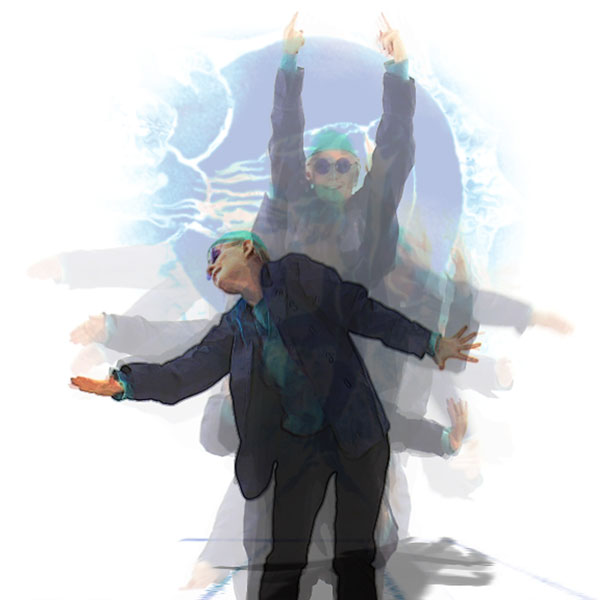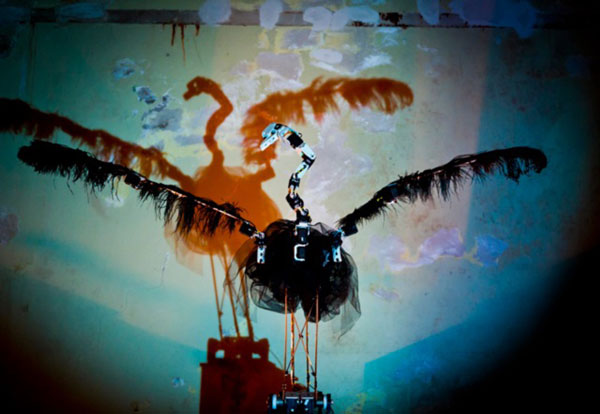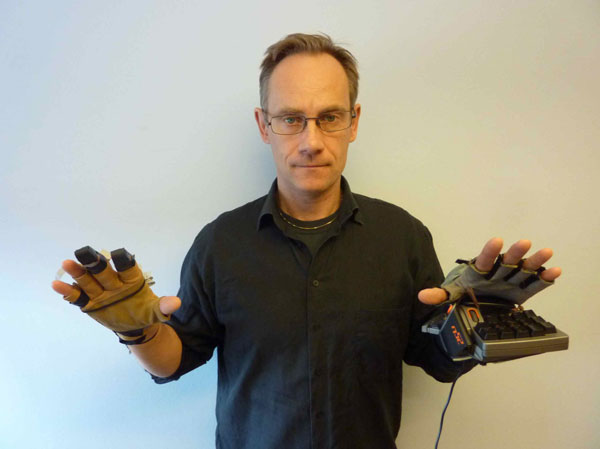Carl Unander-Scharin
(Both authors are first author)
Abstract
Sensory Digital Intonation. The impact of artistic intuition and experience when fine-tuning digital artefacts. Throughout the artistic practice of the authors and their collaborative works (eg Artificial Body Voices, Robocygne, The Lamentations of Orpheus, The Crystal Cabinet, Olimpia, The Pearlfishers and Ombra Mai Fu) the development phase that we now denominate Sensory Digital Intonation has evolved. In the proposed presentation at Carpa 3, we will elaborate on this and show examples of how this practice has been and is carried out.

Sensory Digital Intonation. The impact of artistic intuition and experience when fine-tuning digital artefacts.
In a series of works, the authors have in a collaborative process created artworks in the realm of technology-related choreography and opera. The technology developed in relation to the artworks ranges from robotics, sensors, motion capture, carry-on instruments, synthesis of movement and sound, interactive vocal art and video art. (Unander-Scharin et al., 2008, 2009, 2011, 2012, 2013.) The presentation was a combination of a lecture and a performance probing the concept of Sensory Digital Intonation in relation to four digital art-works – Robocygne, The Charged Room, The Throat III and The Virtual Viola da Gamba. Videos of the first two can be seen at http://www.operamecatronica.com while the two latter were performed live, and can be seen as a documentation at the webpage http://www.electronic-opera.com/carpa2013
When combining evolving technology with artistic ideas, there is always the danger of emphasizing the more technological aspects of the development work and to be constrained by the demands and the limits of technology. When an artistic vision is guiding the emerging artefact, the object is to take the outcome beyond merely commanding and controlling the matter.
With the concept of Sensory Digital Intonation we want to highlight how the fine-tuning of technologies and real time interactivity relate to artistic concerns and creativity. In our artistic practice, the seminal development work takes place in a process where artistic intuition and experience continuously influence the technological development and vice versa, a process that has similarities with what musicians call intonation.
The word intonation is used both within phonology and in music. In phonology, intonation relates to the melodic content of speech, and in music intonation relates to the fine-tuning of tones within chords, voices and musical instruments – the real-time adjustment of pitch by musicians and ensembles when performing music. When a group of musicians are performing together, the constituent instruments and voices produce tones that in one way or another will form a body of sound. Each performer will situate her/his tones, in one way or another, by a very precise adjusting to the resulting overall sound – be it in the search for pure thirds, the search for a uniform unisono, or be it in search of cacophony. When relating to musical instruments, intonation may also signify the setting of a pre-set tuning of pitches and pitch-tables – as the pre-set tones of organs, pianos and synthesizers.
Throughout the artistic practice of the authors and their collaborative works, the development phase that we now denominate Sensory Digital Intonation has evolved. In the presentation at Carpa 3, we elaborated on this and showed examples on how this practice has been evolving and how it is presently carried out.


Bios
Åsa Unander-Scharin (PhD) choreographer and artistic researcher collaborating with dancers, musicians, programmers and robotic researchers. She holds a position as assistant professor at Luleå University of Technology and member of The Committee for Artistic Research at The Swedish Research Council. Her choreographic works have been presented at festivals, art galleries and conferences in Europe, Japan, Vietnam, Canada and USA. In 2008 her doctoral thesis Human Mechanics and Soulful Machines was published. Recent works are Artificial Body Voices for the Swedish television, Opera Mecatronica at the Swedish Royal Opera House and Rotterdam Opera Days and Robocygne at the opera house of Düsseldorf. asa.unander-scharin@telia.com
Carl Unander-Scharin is a Swedish composer and tenor. He specializes in high lyric tenor parts, and was between 2000–2010 engaged as tenor soloist at the Royal Opera House in Stockholm. In parallel with his extensive activities as a singer, Carl is a prolific composer and has written nine operas, as well as music for TV, film, dance, choral works, oratorios, and interactive works. Carl is since 2011 a visiting professor at the University College of Opera, as well a PhD candidate at KTH (Kungliga Teksniska Högskolan) where the research project Extending Opera is undertaken. carl.unander-scharin@telia.com
References
Elblaus, Ludvig, Hansen, Kjetil Falkeberg, and Unander-Scharin, Carl 2011. “Exploring the design space: Prototyping ‘The Throat v3’ for the elephant man opera.” Sound and Music Computing 11 http://smcnetwork.org/smc_papers-2011172
Unander-Scharin, Åsa 2008. Mänsklig mekanik och besjälade maskiner: Koreografiska perspektiv på mänskliga kvaliteter i kroppars rörelse (Human mechanics and soulful machines: Choreographic perspectives on human qualities in body motion) Dissertation. Luleå University of Technology.
Unander-Scharin, Åsa 2009. “Moving Mechatronics in Tedance.” In Daniel Tércio (ed.) Perspectivas sobre Dança em Expansão Tecnológica / Tedance. Perspectives on Technologically Expanded Dance. Lissabon: Faculdade de Motricidade Humana Lissabon University, pp 177-190.
Unander-Scharin, Åsa 2011. “Three Interactive Scenes of The Crystal Cabinet”. In Body, Space and Technology, Theme: Sensual Technologies: Collaborative Practices of Interdisciplinarity London: Brunel University. http://bstjournal.com/vol1001/asaunanderscharin/home.html
Unander-Scharin, Carl, Elblaus Ludvig, and Höök, Kia 2013. “The Throat III: Disforming Operatic Voices Through a Novel Interactive Instrument”. Extended Abstract, CHI 2013, Paris. http://chi2013.acm.org/
Videos of artworks
Unander-Scharin, Åsa & Unander-Scharin, Carl 2010. Robocygne. http://www.operamecatronica.com
Unander-Scharin, Carl and Unander-Scharin, Åsa 2012. Artificial Body Voices. Interactive Dancework, Swedish Television/ SVT
Lecture/ Performance at Carpa 2013 at www.electronic-opera.com/carpa2013